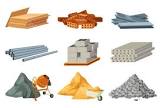**Title**: “Cracking the Code: Understanding Plastic Machining Rates in Germany”

**Excerpt**: Dive into the world of CNC machining with this comprehensive guide, focusing on plastic machining rates in Germany. Discover key insights into technical requirements, industry trends, and innovative solutions, all tailored to optimize your manufacturing process.

**Main Content**:
In the ever-evolving world of Computer Numerical Control (CNC) machining, staying ahead of the curve is crucial. For businesses operating in Germany or planning to outsource production there, understanding the intricacies of plastic machining rates is paramount. This article will shed light on the technicalities, applications, and solutions in this area, providing you with the knowledge you need to make informed decisions and streamline your operations.
**Challenges in Plastic Machining**
Working with plastics presents several unique challenges, primarily due to their sensitive thermal properties and lower rigidity compared to metals. Precision is paramount, with a need for careful calibration of cutting speed, feed rate, and depth of cut. Additionally, the selection of the right cutting tool is crucial to prevent issues like melting, chipping, or burning.
The cost factor is another significant concern. The plastic machining rate in Germany, like anywhere else, is influenced by several factors: the complexity of the part being machined, the type of plastic material used, the time taken for machining, and the CNC machine’s operational cost.
**Solutions and Best Practices**
Despite these challenges, there are several ways to optimize your plastic machining process.
1. **Understanding Material Properties**: Before starting the machining process, it’s vital to understand the plastic’s properties you’re working with. Different plastics have various thermal and mechanical properties which can significantly affect the machining rate and quality of the final product.
2. **Tool Selection**: Choosing the right tool with the correct geometry and material can significantly improve the machining rate and the quality of the product. High-speed steel (HSS) or carbide tools are typically used for plastic machining.
3. **Optimizing Feed and Speed Rates**: Balancing the feed and speed rates is crucial to prevent plastic deformation or melting. Using a CNC machine with a high-speed spindle can often improve the machining rate.
4. **Cooling System**: Considering the thermal sensitivity of plastics, a proper cooling system is essential to prevent overheating and ensure the tool’s longevity.
**Industry Trends**
In Germany, the CNC machining industry is rapidly embracing Industry 4.0, leading to a surge in digitization and automation. These advancements can optimize production, reduce costs, and increase the plastic machining rate. It’s also important to note the growing emphasis on sustainability in the German manufacturing sector, with a shift towards biodegradable and recycled plastics.
**Practical Advice**
1. **Choose the Right Machining Partner**: When outsourcing your plastic machining needs, look for a partner with extensive experience in plastic machining, advanced CNC machines, and a strong track record of quality.
2. **Continuous Learning and Improvement**: Stay updated with the latest industry trends and advancements in CNC machining technology. Continuous learning and improvement will help you optimize your machining rate and stay competitive.
3. **Quality Over Speed**: While machining rate is important, never compromise on the quality of the final product. A higher machining rate at the cost of quality can lead to increased wastage and costs in the long run.
In conclusion, understanding the plastic machining rate in Germany requires a blend of technical knowledge, practical skills, and a keen eye on industry trends. By embracing best practices and keeping abreast of advancements, you can navigate the challenges and seize the opportunities this vibrant industry offers.
